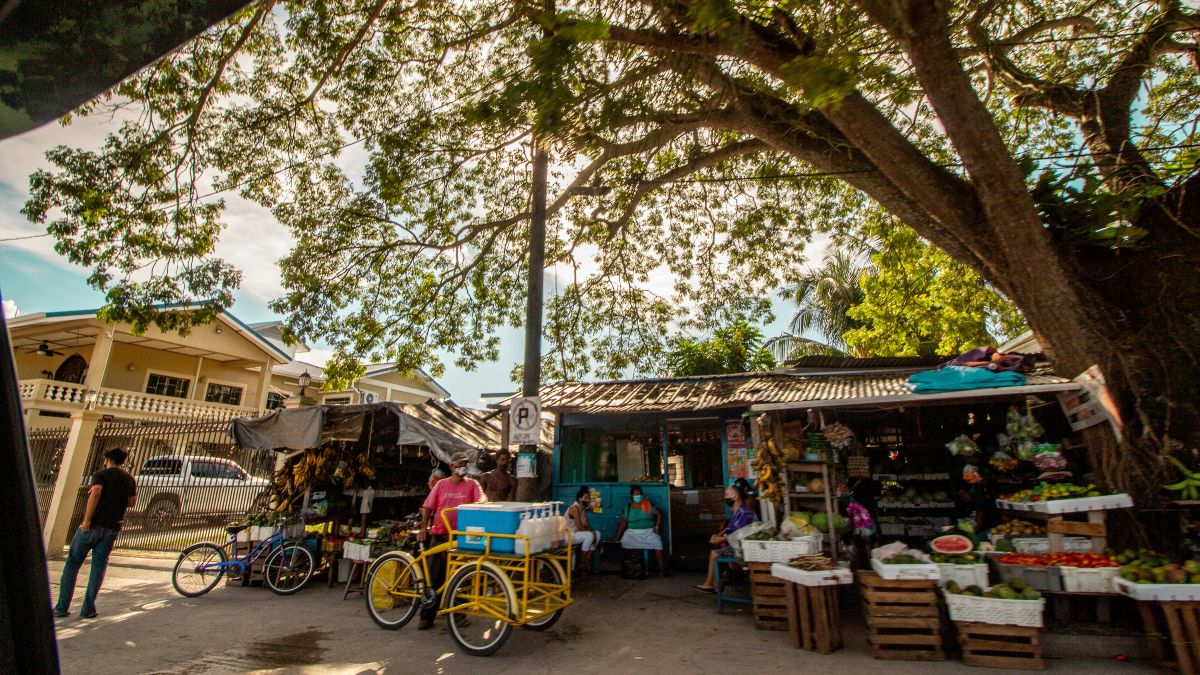Cost of Living in Belize: Real Insights from Current Expats
4 min readWhat is the cost of living in Belize? Expats share their actual expenses and experiences, offering honest insights for potential newbies.
The post Cost of Living in Belize: Real Insights from Current Expats appeared first on Central America.

What is the cost of living in Belize? Expats share their actual expenses and experiences, offering honest insights for potential newbies.
Understanding the true cost of living in Belize can be challenging, with marketing materials and general online information often painting an incomplete picture. This article draws from recent discussions in Belize expat Facebook groups where current residents share their actual experiences with newcomers asking about living costs. As one long-term resident says, “People often think that Belize is a dirt-cheap alternative to mainstream North American life. That you can live like a king on a pauper’s budget. That is unequivocally untrue.”
Location Defines Your Costs
The main factor affecting living costs in Belize is location. Coastal areas and islands like Ambergris Caye and Placencia, command the highest prices. “Cost of living can depend. On the coast or islands, it is much more expensive than inland,” says one expat. Another adds, “I lived in San Pedro. I rented a tiny and I do mean tiny bachelor suite for $500 USD with a pool… Food was also expensive.”
In Placencia, the real estate market has seen significant increases. “It is basically unheard of to see a house for sale for less than $300,000 USD now,” says a local resident. While property taxes remain surprisingly low – often under $75 USD per year – the initial investment can be substantial.
Other locations offer more affordable options. “You can buy a house in Corozal, a decent house, for $125,000 USD,” shares one expat. Another resident in San Ignacio describes buying “a nice 2,2 wooden home” and completing necessary repairs for about $150,000 USD total, with property taxes of just $$84 USD per year. They add that their town water costs “about $11 USD a month.”
Monthly Expenses and Utilities
Basic utilities in Belize vary based on location and lifestyle choices. “Electricity is about $200 USD because we run A/C when it’s hot,” says a resident, who adds that with solar panels, costs could be much lower. Another expat notes, “Cost of living really depends on how you cook and if you live with A/C which will make your electric bill higher.”
Infrastructure can be challenging in some areas. As a Placencia resident explains, “We’re currently plagued with disruptions to our water supply” and “our awesome sanitation guys have struggled through the past five months of garbage collection because our ancient rust-bucket compactor truck finally died.”
Transportation expenses require careful consideration. Gas prices run at around $6-7 USD per gallon, while annual car insurance costs about $500 USD. In San Pedro, golf carts are essential, with one resident noting, “Golf cart rental varies… they pay $700.00 US a month, that’s for a four-person one. If you get a six-person one it will be more.” Some expats recommend living near town centers to reduce transportation costs, particularly in areas with good walking infrastructure.
Lifestyle Choices and Local Integration
Expats consistently emphasize that lifestyle choices significantly impact costs. “Any foods imported can be at least two or three times higher than the U.S., but most restaurants in our town are reasonably priced especially Chinese restaurants.” Another expat shares their experience: “I bought from the Mennonites when they came and saved a ton of money that way. If I went out for drinks I drank local booze not the usual brand names… I ate in local restaurants… the food is cheap and super good.”
Immigration costs require careful consideration in the monthly budget. Anyone living in Belize as a tourist (meaning without legal residency) needs to pay $100 USD per person per month for visa renewals. Many recommend options like the Qualified Retired Persons (QRP) program or permanent residency to cut out these costs.
Housing and Healthcare Considerations
Housing decisions also impact overall costs. In tourist areas, short-term rental properties must register with the Belize Tourism Board, adding 9% to monthly rates. “It’s the million dollar question,” says a Placencia resident about housing costs. “Construction is a quagmire and the end cost is usually twice the estimate even when working with ‘reputable’ builders.”
Another expat advises: “Rent for a long time, maybe always. Renting gives you flexibility in case of sickness, injury, missing family, neighborhood you don’t like, unsuitable home, financial changes, problems with heat/humidity/culture shock.” The housing market operates primarily on cash transactions, with traditional mortgages rarely available.
Healthcare and infrastructure considerations also affect living costs. “We’ve been without a full-time doctor on the peninsula for a number of years,” says someone in Placencia, highlighting the importance of planning for medical care. Another expat adds perspective to the overall cost situation: “Cost of living depends on your location and standard of living. It ranges between $600 and $6,000 USD per month, from an off-grid farm dwelling in a village to a mansion on the beach in San Pedro.”
Making the Move: What to Consider
For those considering a move to Belize, these firsthand accounts reveal a more nuanced picture than what’s often portrayed in retirement magazines and real estate marketing. While the country offers a range of lifestyle options, success depends largely on careful location selection and realistic expectations about costs. The experiences of current expats suggest that those who thrive in Belize are often the ones who take time to explore different areas, remain flexible in their expectations, and are willing to adapt their lifestyle.
Most importantly, they understand that while the cost of living in Belize can be more affordable than in North America, creating a sustainable and comfortable lifestyle requires careful planning and a clear understanding of both the opportunities and challenges that come with expatriate life in this Central American nation.



